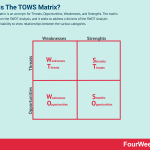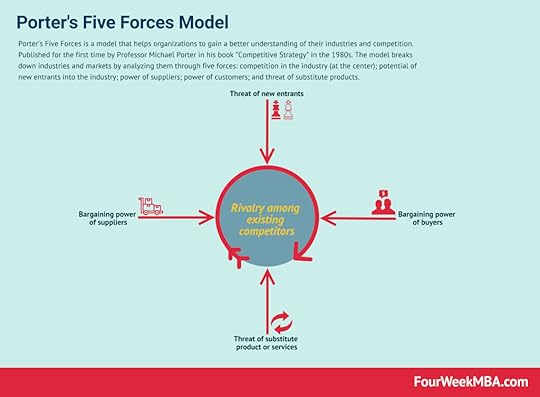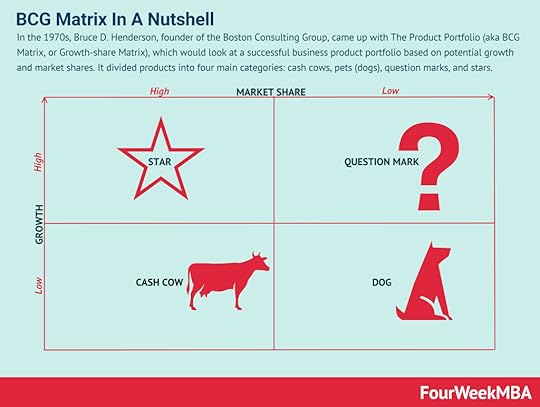What Is The TOWS Matrix And How To Use It


The TOWS Matrix is an acronym for Threats, Opportunities, Weaknesses, and Strengths. The matrix is a variation on the SWOT Analysis, and it seeks to address criticisms of the SWOT Analysis regarding its inability to show relationships between the various categories.
Understanding the TOWS MatrixThe TOWS Matrix was developed by management consultant Heinz Weihrich. He recognized that the SWOT Analysis – although highly successful in its own right – had significant shortcomings.
While the SWOT Analysis identifies Strengths, Weaknesses, Opportunities, And Threats, it does not make any attempt to make links between them. For example, a business with a perceived weakness may then see it as a threat. Another business that identifies an opportunity may be able to match it to one of their existing strengths.
The TOWS Matrix, then, is a much more useful graphical representation of a SWOT Analysis. Internal strengths and weaknesses are compared to external opportunities and threats. Every one of the four individual factors can influence and impact each other.
The four strategy combinations of a TOWS Matrix
Strengths/Opportunities (SO)In this quadrant of the TOWS Matrix, a business must assess its strengths on a case by case basis to determine if it can use them to capitalize on opportunities. For example, a car manufacturer operating in a luxury car market (opportunity) with a strong R&D culture (strength) may design a feature-packed line of premium vehicles.
Strengths/Threats (ST)Here, the business should assess each strength based on its ability to counteract or avoid external threats. Returning to the car manufacturer example, unfavorable exchange rates (the threat) may be counteracted by the company using its R&D expertise to build a factory in a country with a better-valued currency.
Weaknesses/Opportunities (WO)In the WO quadrant, an organization must determine how its weaknesses can be eliminated or offset by external opportunities. For example, inexperience in dealing with foreign labor unions (weakness) can be overcome by hiring managers with the relevant experience (external opportunity).
Weaknesses/Threats (WT)In the final strategy combination, the business assesses each weakness and threat and determines if they can be avoided. The car manufacturer with little experience operating in foreign markets (weakness) can avoid entering that market altogether. Another maker with a heavy reliance on a single car model (weakness) can reduce the threat of competition by developing a range of different models.
Benefits of the TOWS MatrixThe benefits of creating a TOWS Matrix include:
A more versatile option than some other techniques that are glorified brainstorming sessions. It allows a business to link external and internal factors and their potential impact on business operations.Simple to understand through all levels of management and is relatively simple to execute. This increases employee focus and cohesiveness.The TOWS Matrix also facilitates the discovery of unknown aspects of a business. Whether they are unquantified strengths or hidden threats, newfound insights into operations help a company plan for the future, and facilitate growth.TOWS matrix exampleBelow is a TOWS matrix example for The Boeing Company with respect to the four strategy combinations outlined above.
Strengths/Opportunities (SO)Boeing has several strengths that it can turn into opportunities to maintain or increase market share. These include:
Established, reliable supplier network – over the years, Boeing has built a robust network of suppliers that allow it to overcome bottlenecks.Customer satisfaction – despite recent setbacks with the 737 MAX, Boeing’s extensive clientele in the form of airlines and government are satisfied with its products. Boeing enjoys extensive brand equity around the world which it uses to drive sales.Free cash flow – for Q4 2021, Boeing reported a free cash flow of $494 million. The company is using some of this cash to position itself as a safe and sustainable airline as the world returns to air travel after COVID-19.Strengths/Threats (ST)Here is a look at the strengths that can be used to avoid external threats:
Research and development – Boeing has a strong history of research and development, with several pioneering aircraft in both the commercial and defense industries. Today, the company is partnering with scientific organizations to make air travel more sustainable and reduce its environmental impact.Global and strategic partners – while Boeing has a strong presence in America, approximately 70% of commercial aircraft revenue is derived from customers outside the United States. This includes many emerging markets where there has also been a rapid increase in defense, space, and security revenue. What’s more, the company has over 20,000 suppliers and partners and collaborates with over 50 international universities. Taken as a whole, this helps Boeing counter the threat of Airbus and maintain or even increase its market share.Weaknesses/Opportunities (WO)How is Boeing turning its weaknesses into opportunities?
Unsafe aircraft – the release of the 737 MAX was rushed to counter a similar new aircraft released by Airbus. Two 737s crashed killing all on board, with both experiencing the same malfunction. In late 2021, the company admitted full responsibility for the disasters which paved the way for compensation to be paid to the victims’ families. Boeing is now using this weakness to improve its software development, technical documentation, and pilot training procedures.Anti-union stance – some 35% of Boeing’s 162,000 employees are union members. The company’s anti-union stance is well known, with production of the 787 Dreamliner moved from Seattle to South Carolina to reduce employee organization. Many of Boeing’s most senior or skilled employees were also terminated for their union affiliations, while others had their workloads increased significantly or were reprimanded for quality control issues. Moving forward, Boeing has an opportunity to adopt a less inflammatory stance and increase its productivity in the process.Weaknesses/Threats (WT)Finally, let’s look at a weakness that may turn out to be a threat:
Domestic workforce – with a strong domestic workforce in the United States, Boeing is vulnerable to recent, substantial increases in the minimum wage. This has seen much of aircraft component manufacturing move overseas, with a dedicated 737 completion factory opened in China in 2018. Off-shore manufacturing to counter rising wages is a clear trend, with 30% of the 787 Dreamliner made overseas compared to just 5% of the older 747 jumbo jet. While rising minimum wages do not impact Boeing’s senior engineers, it remains to be seen whether the company will continue to outsource more of its aircraft assembly.Key takeawaysThe TOWS Matrix builds on the success of the SWOT Analysis by allowing a business to identify appropriate strategic actions.The TOWS Matrix consists of four strategies that help a business understand, plan, and prepare for the possible interaction between threats and weaknesses with strengths and weaknesses.The TOWS Matrix creates cohesion in the workforce and helps a business unearth hidden strengths or weaknesses that will influence future decision making.Connected strategic frameworks SWOT Analysis A SWOT Analysis is a framework used for evaluating the business’s Strengths, Weaknesses, Opportunities, and Threats. It can aid in identifying the problematic areas of your business so that you can maximize your opportunities. It will also alert you to the challenges your organization might face in the future.PESTEL Analysis
A SWOT Analysis is a framework used for evaluating the business’s Strengths, Weaknesses, Opportunities, and Threats. It can aid in identifying the problematic areas of your business so that you can maximize your opportunities. It will also alert you to the challenges your organization might face in the future.PESTEL Analysis The PESTEL analysis is a framework that can help marketers assess whether macro-economic factors are affecting an organization. This is a critical step that helps organizations identify potential threats and weaknesses that can be used in other frameworks such as SWOT or to gain a broader and better understanding of the overall marketing environment.Porter’s Five Forces
The PESTEL analysis is a framework that can help marketers assess whether macro-economic factors are affecting an organization. This is a critical step that helps organizations identify potential threats and weaknesses that can be used in other frameworks such as SWOT or to gain a broader and better understanding of the overall marketing environment.Porter’s Five Forces Porter’s Five Forces is a model that helps organizations to gain a better understanding of their industries and competition. Published for the first time by Professor Michael Porter in his book “Competitive Strategy” in the 1980s. The model breaks down industries and markets by analyzing them through five forcesBlue Ocean Strategy
Porter’s Five Forces is a model that helps organizations to gain a better understanding of their industries and competition. Published for the first time by Professor Michael Porter in his book “Competitive Strategy” in the 1980s. The model breaks down industries and markets by analyzing them through five forcesBlue Ocean Strategy A blue ocean is a strategy where the boundaries of existing markets are redefined, and new uncontested markets are created. At its core, there is value innovation, for which uncontested markets are created, where competition is made irrelevant. And the cost-value trade-off is broken. Thus, companies following a blue ocean strategy offer much more value at a lower cost for the end customers.BCG Matrix
A blue ocean is a strategy where the boundaries of existing markets are redefined, and new uncontested markets are created. At its core, there is value innovation, for which uncontested markets are created, where competition is made irrelevant. And the cost-value trade-off is broken. Thus, companies following a blue ocean strategy offer much more value at a lower cost for the end customers.BCG Matrix In the 1970s, Bruce D. Henderson, founder of the Boston Consulting Group, came up with The Product Portfolio (aka BCG Matrix, or Growth-share Matrix), which would look at a successful business product portfolio based on potential growth and market shares. It divided products into four main categories: cash cows, pets (dogs), question marks, and stars.Balanced Scorecard
In the 1970s, Bruce D. Henderson, founder of the Boston Consulting Group, came up with The Product Portfolio (aka BCG Matrix, or Growth-share Matrix), which would look at a successful business product portfolio based on potential growth and market shares. It divided products into four main categories: cash cows, pets (dogs), question marks, and stars.Balanced Scorecard First proposed by accounting academic Robert Kaplan, the balanced scorecard is a management system that allows an organization to focus on big-picture strategic goals. The four perspectives of the balanced scorecard include financial, customer, business process, and organizational capacity. From there, according to the balanced scorecard, it’s possible to have a holistic view of the business.Scenario Planning
First proposed by accounting academic Robert Kaplan, the balanced scorecard is a management system that allows an organization to focus on big-picture strategic goals. The four perspectives of the balanced scorecard include financial, customer, business process, and organizational capacity. From there, according to the balanced scorecard, it’s possible to have a holistic view of the business.Scenario Planning Businesses use scenario planning to make assumptions on future events and how their respective business environments may change in response to those future events. Therefore, scenario planning identifies specific uncertainties – or different realities and how they might affect future business operations. Scenario planning attempts at better strategic decision making by avoiding two pitfalls: underprediction, and overprediction.
Businesses use scenario planning to make assumptions on future events and how their respective business environments may change in response to those future events. Therefore, scenario planning identifies specific uncertainties – or different realities and how they might affect future business operations. Scenario planning attempts at better strategic decision making by avoiding two pitfalls: underprediction, and overprediction.Other related business frameworks:
AIDA ModelAnsoff MatrixBusiness AnalysisBusiness Model CanvasBusiness Strategy FrameworksVRIO FrameworkAdditional resources:
Business ModelsBusiness StrategyDistribution ChannelsGo-To-Market StrategyMarketing StrategyMarket SegmentationNiche MarketingRevenue ModelsThe post What Is The TOWS Matrix And How To Use It appeared first on FourWeekMBA.



